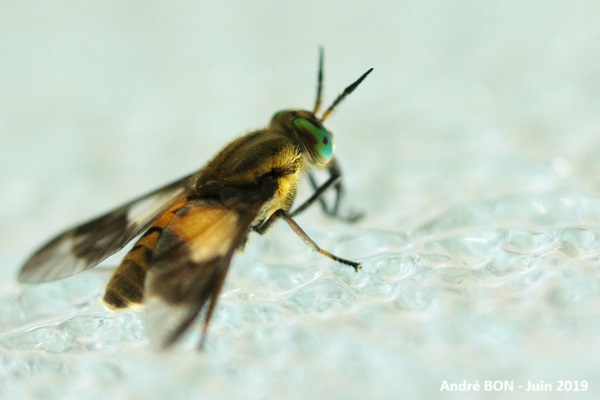
| Chrysops viduatus (Fabricius, 1794) |

|
|
Scientific name: Chrysops viduatus (Fabricius, 1794) Common name: French name: Order: Diptera Family: Tabanidae Wingspan : 8.5 to 10 mm. Biotope: Wet meadows, peat bogs, marshes, damp forests. Geographic area: Palearctic region. Observation period : May to August. |
Horseflies of the Chrysops genus have bright green (or sometimes reddish) eyes with purple or violet spots. Females have their eyes separated on the top of the head, those of males touch. The first article of the antennae is also thicker in males than in females. The wings are spotted dark brown. Males feed on nectar from flowers, females bite wild and domestic mammals as well as humans. Chrysops viduatus does not have entirely black legs. The tibiae (at least the hind tibiae) are brown, even yellowish red. The wing disc cell does not have a clear central area. It may be slightly transparent but not very clearly. On females, tergite 2 is yellow with a small square, triangular, oval or heart-shaped black spot near the anterior margin and distant from the posterior margin. On males, tergite 2 bears a large rectangular spot. |
| [To know more about the Chrysops viduatus] [Top] |

|
The depth of field is reduced but we can see that tibia 2 is brown. There is no clear central area in the disc cell. The separate eyes indicate a female. Yellow tergite 2 with a small black spot indicates Chrysops viduatus. I didn't get bitten :-) |